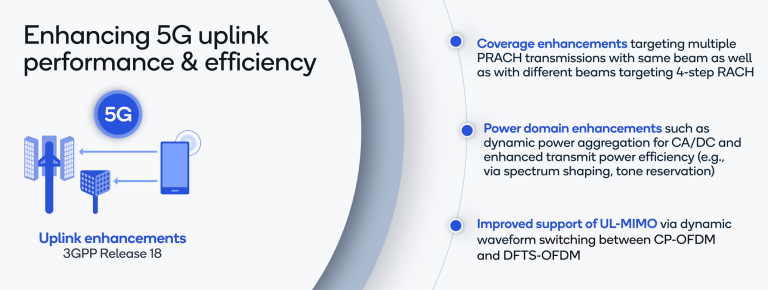What Is RedCap in 5G? Use Cases and Industry Applications Explained
telcomatraining.com – As 5G technology continues to evolve, various innovations are emerging to enhance its capabilities. One of the latest developments is RedCap (Reduced Capacity), a feature designed to meet the growing demands for diverse mobile applications. In this article, we’ll explore what RedCap in 5G is, its use cases, and how it’s shaping the future of telecommunications.
What is RedCap in 5G?
RedCap, or Reduced Capacity, is a concept within the 5G New Radio (NR) architecture aimed at providing a balanced solution between full 5G capabilities and more efficient, lower-cost alternatives. It caters specifically to use cases that require lower data rates, reduced complexity, and cost-effectiveness, while still benefiting from the high-speed, low-latency features of 5G. RedCap devices are designed to be less power-hungry, more affordable, and can operate at lower frequencies, making them an ideal solution for Internet of Things (IoT) devices and other specific industrial applications.
Unlike the typical 5G devices that demand high performance, RedCap targets devices with moderate performance requirements. It provides a way for operators to deliver 5G services to a broader market segment without the significant infrastructure investment associated with standard 5G deployments.
Key Features of RedCap in 5G
- Lower Complexity: RedCap devices are simplified versions of full 5G NR devices, reducing their complexity and cost.
- Reduced Power Consumption: These devices are optimized to consume less power, which is crucial for battery-powered devices that need to operate for extended periods.
- Cost Efficiency: RedCap devices offer a more affordable alternative for deploying 5G technology, making it accessible for various industries that need moderate connectivity.
- Broad Compatibility: It supports both the 5G standalone and non-standalone architectures, ensuring versatility across different network configurations.
Use Cases of RedCap in 5G
RedCap is designed to cater to specific use cases that don’t require the full capabilities of standard 5G but still benefit from the advancements of the technology. Here are some key use cases:
- IoT and Smart Devices
IoT devices are central to the evolution of industries such as smart cities, manufacturing, and agriculture. These devices typically require low data rates but need consistent connectivity. RedCap’s reduced capacity allows for more efficient use of 5G networks, ensuring that IoT devices can function effectively without consuming excessive energy or resources. - Industrial Automation
In industries like manufacturing and logistics, RedCap enables the use of sensors and automated machines that do not require high bandwidth but still benefit from 5G’s low latency. RedCap provides a more cost-effective way to deploy 5G for industrial applications without overloading the network. - Wearables and Health Devices
Health-monitoring devices and wearables that track vital signs such as heart rate or blood glucose levels are increasingly being integrated with 5G technology. These devices, which don’t require high data throughput, can leverage RedCap to maintain a connection without unnecessary energy consumption, benefiting from enhanced reliability and performance in healthcare environments. - Vehicle-to-Everything (V2X) Communications
While autonomous vehicles require high-bandwidth capabilities, other connected vehicle systems, such as traffic monitoring sensors or fleet management systems, benefit from RedCap’s reduced complexity and cost. RedCap in 5G allows for efficient data transmission without the need for high-performance network infrastructure.
Industry Applications of RedCap in 5G
The introduction of RedCap into the 5G landscape holds significant potential for multiple industries. Here are some key sectors that are poised to benefit:
- Healthcare
With the growing adoption of telemedicine and remote monitoring, RedCap enables healthcare devices to stay connected with minimal power usage. This is particularly important for wearable health devices, patient monitoring systems, and even remote surgery tools that do not need the bandwidth of standard 5G but still require low-latency communication. - Manufacturing and Logistics
In the manufacturing sector, automation and predictive maintenance systems require efficient communication to function optimally. RedCap ensures that manufacturing machines and sensors stay connected without the high operational costs associated with full 5G capabilities. - Agriculture
Precision farming, which involves IoT sensors to monitor soil conditions, weather, and crop health, benefits from the low-cost, low-power nature of RedCap. This enables farmers to deploy more sensors over larger areas, optimizing yield while minimizing infrastructure investment. - Smart Cities
For smart cities, RedCap facilitates the deployment of connected devices such as smart meters, traffic lights, and waste management systems, all of which require moderate connectivity. The ability to deploy these devices cost-effectively enhances urban management and operational efficiency.
Conclusion
RedCap in 5G is a promising development that addresses the need for cost-effective, efficient, and scalable connectivity for specific use cases that don’t demand full 5G performance. Its potential to enhance industries like healthcare, manufacturing, agriculture, and smart cities makes it a crucial component in the widespread adoption of 5G technologies. As 5G networks continue to grow, RedCap will play a vital role in ensuring that various industries can tap into the power of next-generation networks without the need for significant investments in infrastructure.







